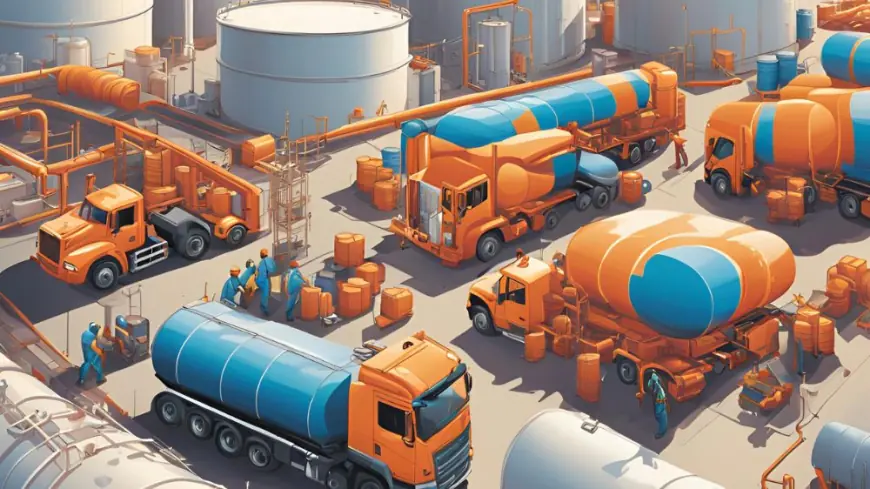Choosing Stainless Steel Tubing for Chemical Transport
Learn why 317L stainless steel tubing is ideal for chemical transport, offering corrosion resistance, high strength, and durability for harsh industrial environments.
In the chemical industry, the safe and effective transport of chemicals is a vital part of production. Materials used in piping and tubing systems must be able to withstand corrosion and harsh conditions in the processes of chemicals. The many materials used can be narrowed down to stainless steel, particularly 317L stainless steel tubing, which tops the list of popular and reliable materials applied in chemical transport activities. This blog explores the key reasons why 317L stainless steel tubing is an ideal material for the transportation of chemicals.
Understanding 317L Stainless Steel Tubing
Before diving into its advantages, it's important to understand what 317L stainless steel tubing is. This grade of stainless steel is a low-carbon version of 317 steel, which contains molybdenum, chromium, and nickel. Because 317L contains low amounts of carbon, it is naturally resistant to sensitisation, a type of corrosion that occurs at a high temperature. Molybdenum addition improves its corrosion resistance, especially against chlorides. This means 317L Stainless Steel Tubing is ideal for use in aggressive chemical environments.
Why 317L Stainless Steel Tubing is Ideal for Chemical Transport
1. Superior Corrosion Resistance
Corrosive chemical environments often place tube materials into contact with acids, bases, and chlorides, which will degrade the material over time. Among the best characteristics of 317L stainless steel tubing is its excellent corrosion resistance. Primarily, the high molybdenum content of this alloy improves its resistance to pitting, crevice corrosion, and other general corrosion. Therefore, 317L stainless steel tubing is ideal for the transportation of aggressive chemicals like sulphuric acid, hydrochloric acid, and other acidic corrosive substances.
2. High Strength and Durability
Mechanically, the strength of 317L stainless steel tubing ensures that it can withstand all the rigours involved in chemical transport. Whether the tubing faces a high-pressure system or extreme environmental conditions, it will continue to hold its integrity. Its durability ensures long-lasting performance with minimal maintenance requirements. This is very critical for industries like pharmaceuticals, petrochemicals, and food processing, where the potential losses from lost production and safety risks in case of equipment failure are unimaginable.
3. Resistance to High Temperatures
The reason 317L stainless steel tubing is selected as a transport medium for chemicals is its resistance to extreme temperatures. The melting point of 317L stainless steel alloy is considerably high, thus capable of withstanding both the chemical reactions-driven or altered high temperatures in the processing plant. Such a high-temperature resistance would further prevent the tubing from becoming brittle or otherwise failing under such elevated temperatures, and thus, it is a safe option for industries concerned with high temperatures.
4. Improved Weldability
Chemical plants are designed with complex and customized piping systems that require weldability. This 317L stainless steel tubing has a good weldability characteristic to make welding easy and to assemble in all shapes and sizes as desired. The low carbon content of the alloy avoids carbide precipitation, which results from the weld, leading to corrosion. This ensures that the tubing's integrity is not compromised even after welding, which would compromise the integrity of the weld and might lead to leaks or compromise transport safety.
5. Easy Maintenance and Long-Term Sustainability
The corrosion resistance and durability of 317L stainless steel tubing make for low maintenance requirements. Since it does not rust or corrode, the tubing does not need regular checks or repairs. This enables a reduction of the maintenance cost in the long term while ensuring the chemical transport system will work efficiently throughout its life cycle. With scaling and corrosion buildup avoided, the inner tubing surface also remains clean and free from obstruction, leading to further longevity and efficiency within the system.
6. No reaction with Chemicals
The fact that 317L stainless steel tubing is non-reactive ensures that the chemicals transported are not contaminated at any stage of the process. This is an extremely crucial factor because, in industries such as pharmaceuticals and food processing, the substance's purity has to be preserved at all stages during transportation. Using stainless steel tubing ensures no chemical reaction between the material of the tubing and the chemicals inside it, as this can create byproducts or contaminants that could be harmful.
7. Adherence to Industry Standards
In pharmaceuticals, food processing, and petrochemicals, industries apply certain standards to the materials utilized in their equipment for safety and performance purposes. 317L stainless steel tubing is assured to be in compliance with standards from the FDA, ASME, and ASTM, among others. It is, therefore, an ideal material for chemical transport systems, satisfying the prescribed safety and performance benchmarks set by various regulatory bodies.
Conclusion
The selection criterion of a material for chemical transport should be such that it can withstand the conditions normally encountered in the chemical industry. In this context, 317L stainless steel tubing stands out with its high corrosion resistance strength, high-temperature resistance, weldability, and ease of maintenance as an ideal choice. Therefore, if you are engaged in a pharmaceutical plant, a petrochemical facility, or any other industry that handles corrosive fluids, 317L stainless steel tubing will ensure safe, efficient, and long-lasting chemical transport solutions.

So, when businesses require high-quality 317L stainless steel tubing, partnering with an appropriate 317L stainless steel tubing supplier becomes necessary, ensuring the material selection takes place within the proper timeframe.












